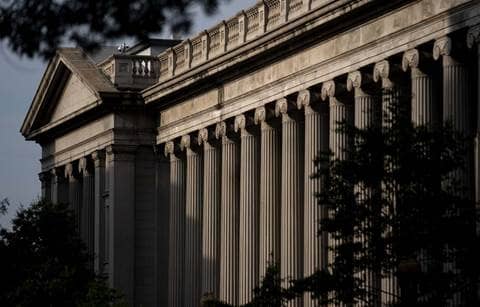The latest budget reconciliation bill out of Washington, DC, known as the One, Big, Beautiful Bill (OBBB), included a significant change to domestic research and experimental (R&E) expenditures under Internal Revenue Code (IRC) Section 174. Taxpayers have been required to capitalize and amortize such amounts in recent years due to changes included in the Tax Cuts and Jobs Act (TCJA). Now, the OBBB provides the option to stop amortizing and return to deducting domestic R&E expenditures in the year paid or incurred. Foreign R&E costs are excluded from the OBBB changes and will continue to be subject to a 15-year amortization period. Importantly, transition rules have also been included that provide options for deducting previously capitalized and unamortized amounts.
Here’s a look at how the new law implements this important change for businesses that incur R&E expenditures. The ripple effects of this change on other tax provisions are also considered along with a suggestions for actions that may be considered over the coming months.
The OBBB provides R&E expensing option
The new law modifies the R&E capitalization and amortization regime created by the TCJA through the creation of parallel rules for domestic and foreign expenditures. Foreign R&E expenditures must continue to be capitalized and amortized over 15 years based on Section 174, as amended. Separately, pursuant to new Section 174A, domestic R&E expenditures may either be deducted currently or capitalized and amortized over a period of no less than 60 months or separately an election can be made to amortize them for 10 years. These changes to the R&E deduction rules take effect for expenditures paid or incurred in tax years beginning after Dec. 31, 2024. As a result, there’s a retroactive effect that will allow calendar year taxpayers to fully deduct domestic R&E expenses incurred during 2025.
The OBBB provides favorable transition rules offering three deduction options to release domestic R&E expenses that were capitalized during tax years 2022, 2023, and 2024.
- Continued amortization is the default rule. Taxpayers that choose not to make any elections will continue to amortize the previously capitalized amounts over the remainder of their five-year periods.
- Additional deductions can also be recognized in 2025 and 2026. All taxpayers can elect to claim catch-up deductions currently. In this case, the unamortized amount of domestic R&E expenditures capitalized between 2022–2024 may be either fully deducted in 2025, or split equally between 2025 and 2026. This option provides flexibility in managing taxable income this year and next.
- Small business taxpayers have an additional option to restore deductions in 2022 through 2024. Taxpayers meeting the small business taxpayer definition in 2025 may elect to amend prior year tax returns to restore domestic R&E deductions in those years. For this purpose, a small business taxpayer is defined under Section 448 to include those with average annual gross receipts of $31 million or less over the prior three years, measured from the 2025 tax year (i.e., 2022 through 2024). Tax shelters aren’t eligible, which includes entities allocating 35% or more of their losses to limited partners or limited entrepreneurs in the 2025 tax year. This option is beneficial in that it restates taxable income in prior years. However, those who don’t wish to file amended returns or adjust prior year taxable income may utilize the forward-looking deduction option described above.
Taxpayers wishing to utilize any of the options other than continuing to amortize previously capitalized domestic R&E will be required to make elections and follow procedural steps to be outlined by the IRS in forthcoming guidance. That guidance is also expected to clarify follow up questions, including the character of released deductions (R&E expense or amortization), flexibility in electing capitalization of Section 174 costs by project going forward, how small taxpayers treat the 2024 tax year if they haven’t yet filed an original return, and the interaction of the amended return and partnership administrative adjustment request (AAR) procedures for small business taxpayers.
The new IRC 174A also permanently affirms software development costs will continue to be classified as research and experimentation costs for this provision.
Research & development tax credit impacts
The OBBB also notably modified Section 280C, which now requires that domestic R&E expenditures deducted or capitalized under Section 174A be reduced by the amount of the research credit. This reduction rule was previously modified by the TCJA and was effective beginning in 2022. It only required the reduction of a business’s R&E expenditures to the extent their research credit exceeded the allowable deduction for qualified research expenses for the year, which was rarely the case. The change enacted by the OBBB mirrors the Section 280C rules that were in place prior to the enactment of TCJA in 2017. However, unchanged by the OBBB, taxpayers still have the option to make an election under Section 280C, reducing their research credit by the maximum corporate tax rate (21%) in lieu of reducing their domestic R&E expenditures.
Small taxpayers who choose to file amended tax returns also must apply the new Section 280C rule retroactively to 2022, so they’re required to reduce their R&E deductions by the amount of their credit. However, they may now also make a late Section 280C election to reduce the research or revoke a prior Section 280C election on their amended tax returns. This election must be made within one year of the OBBB enactment date, July 4, 2025.
In addition, the OBBB limited the expenses eligible to be included in a research credit to only those that “are treated” as R&E expenditures. Prior rules only required that the expenses “may be” as R&E expenditures. While it’s unclear if Congress was truly attempting to force taxpayers to overtly present R&E expenditures as such on their tax return, this language may require much more careful planning and presentation for those taxpayers who desire to claim a research credit.
Don’t delay planning for Section 174 changes
Businesses that claim R&E expenses and research credits on their returns should consider reaching out to their tax advisors in the coming weeks and months to learn more about the impact of these changes on their tax positions. There are a number of variables to be considered and calculations to be made for the 2024 and 2025 tax filing seasons, including:
- Is current expensing of these costs in 2025 the best choice for the business, or would continued amortization be more advantageous? Continued amortization may be considered by those seeking to maximize their business interest expense limitation given the restoration of amortization addbacks in 2025 when calculating the Section 163(j) limitation. Other fact patterns may favor forgoing expensing, including those using the percentage-of-completion method of accounting for contracts or planning for net operating loss utilization.
- If current expensing is the right choice and the business isn’t considered a small business in 2025, then is it better to include the catchup deductions in 2025 or split them evenly between 2025 and 2026?
- For businesses meeting the small business definition in 2025, are prior year adjustments via amended returns the best option? This analysis will be influenced by both the taxable income position in prior years and the procedural process involved with filing amended returns.
- In all of these instances, what impact will the choices have on upcoming third and fourth quarter estimated tax calculations?
The R&E amortization changes are just one small part of the OBBB, but for businesses that rely on the research credit and related R&E deductions, they can have a significant impact on their tax obligations. Time is of the essence when it comes to scheduling a consultation with a tax advisor who understands the subtleties of the new law and how to apply these new rules to the specific facts and circumstances of your business.





